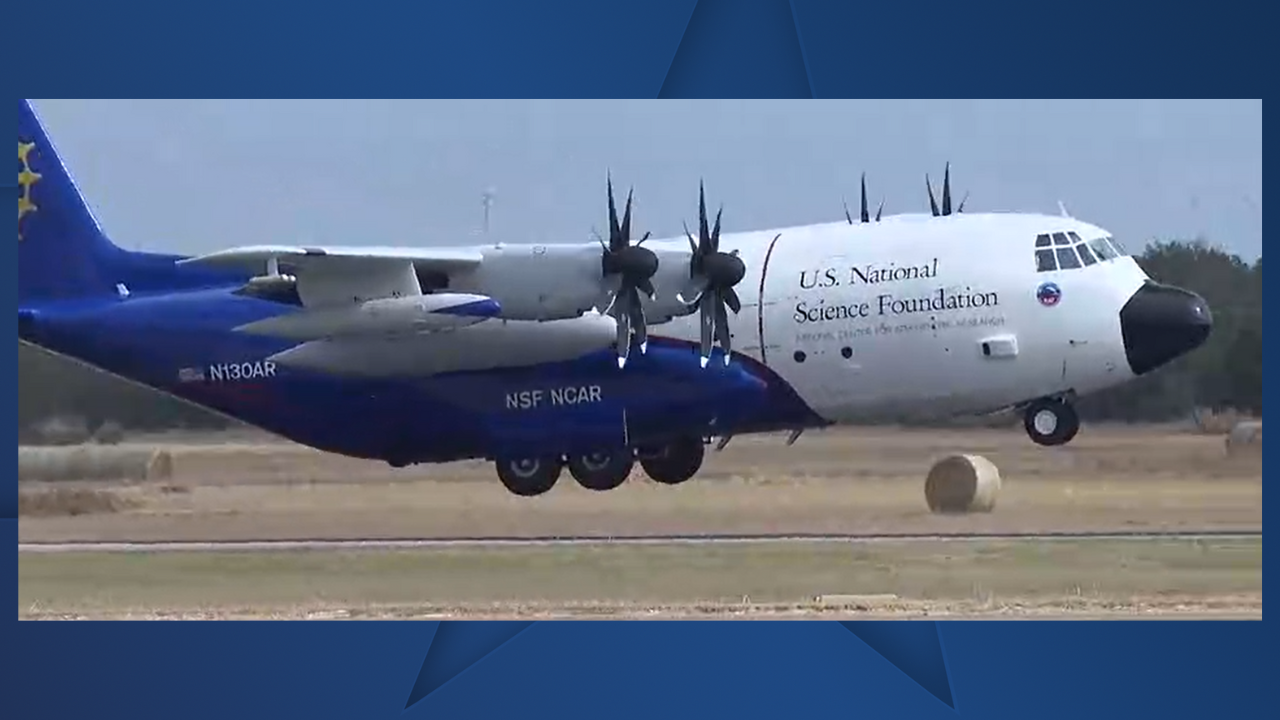WACO, Texas (KXXV) — L3 Harris has been working on the National Center for Atmospheric Research's C-130 research plane at the Texas State Technical College (TSTC) airport, maintaining what serves as a giant flying atmospheric laboratory that travels the world conducting scientific missions.
The National Science Foundation's (NSF) C-130 and its crew recently returned to L3 Harris for a return engagement after a major overhaul in the hangar.
Watch the full story here:
This time it only needed minor maintenance work, specifically to be cleared of sea salt buildup from its latest low-flying mission over New York.
"It is like a ride. In New York, we were able to get down to 300 feet over the water," said Brent Markowski, one of the research pilots.
The aircraft has taken crews to remote locations around the globe, including the Arctic.
"So, we're out over the Arctic. It's completely iced over. Kind of amazing things like that," said Edward Proulx, another research pilot.
Earlier this year, the NSF had the aircraft at L3 Harris for six months for a major upgrade that required extensive work.
"We disassembled a lot of the airplane. Had to put it back together," said Kimberly Kettler, L3 Harris program manager.
The refurbishment was comprehensive, covering everything from the big door in the aircraft's tail, to brand new digital displays in the cockpit, to the pods on the wings that are normally stuffed with instruments, and all the ducts and wires in between.
The work was completed on a tight time frame.
"We had about 20 heads working on it at all times, day shift, night shift. We turned the airplane in time for them on time. Make sure they got their airplane back because they had critical missions," Kettler said.
During this visit to the shop, the plane's huge cargo space was mostly empty. It's usually packed with scientists and instruments from multiple institutions and universities, measuring air currents, temperatures and chemistry. Sometimes the pilots take the plane for a quick 180 in the middle of a mission if the scientists encounter a surprise in the sky.
"And all of a sudden they see a spike and they say 'hey, that's something we weren't expecting at all. Let's go and look at that again,'" Proulx said.
The plane's trip back to L3 Harris for more work, so soon after its last overhaul, is a visit that the teams see as a gratifying endorsement from the NSF.
"You see videos of it flying around and you say 'hey, I worked on that plane.' It's always exciting and a good feeling," Kettler said.
One big change to the plane on its last visit was the paint job, which was completely redone, changing the look of the aircraft with one big exception. The NSF's beloved snowflake logo is still there.
Currently, no new trips to L3 Harris for maintenance are scheduled, but the expectation is that with the rapport they've developed, there will be more to come.
This story was reported on-air by a journalist and has been converted to this platform with the assistance of AI. Our editorial team verifies all reporting on all platforms for fairness and accuracy.



